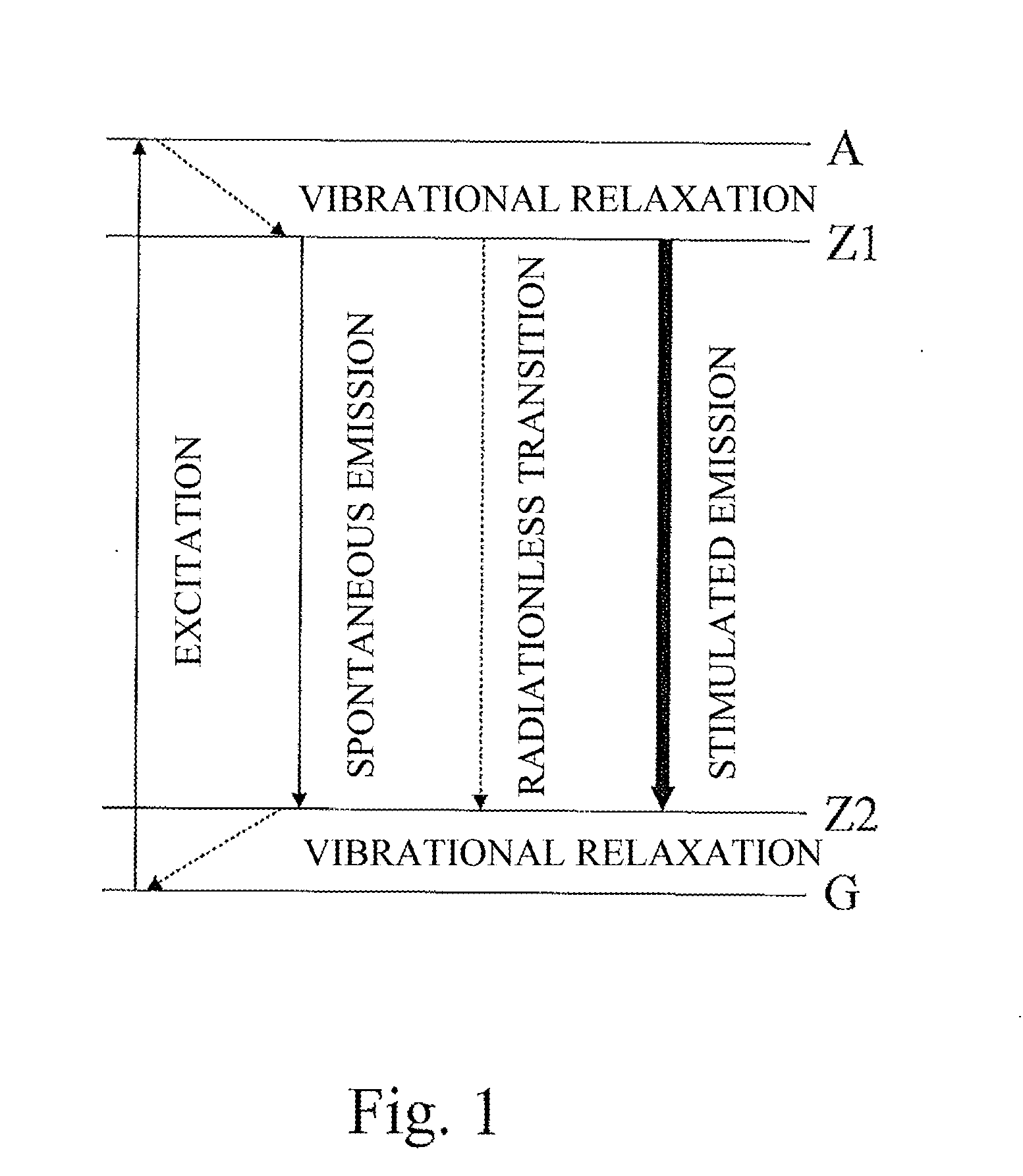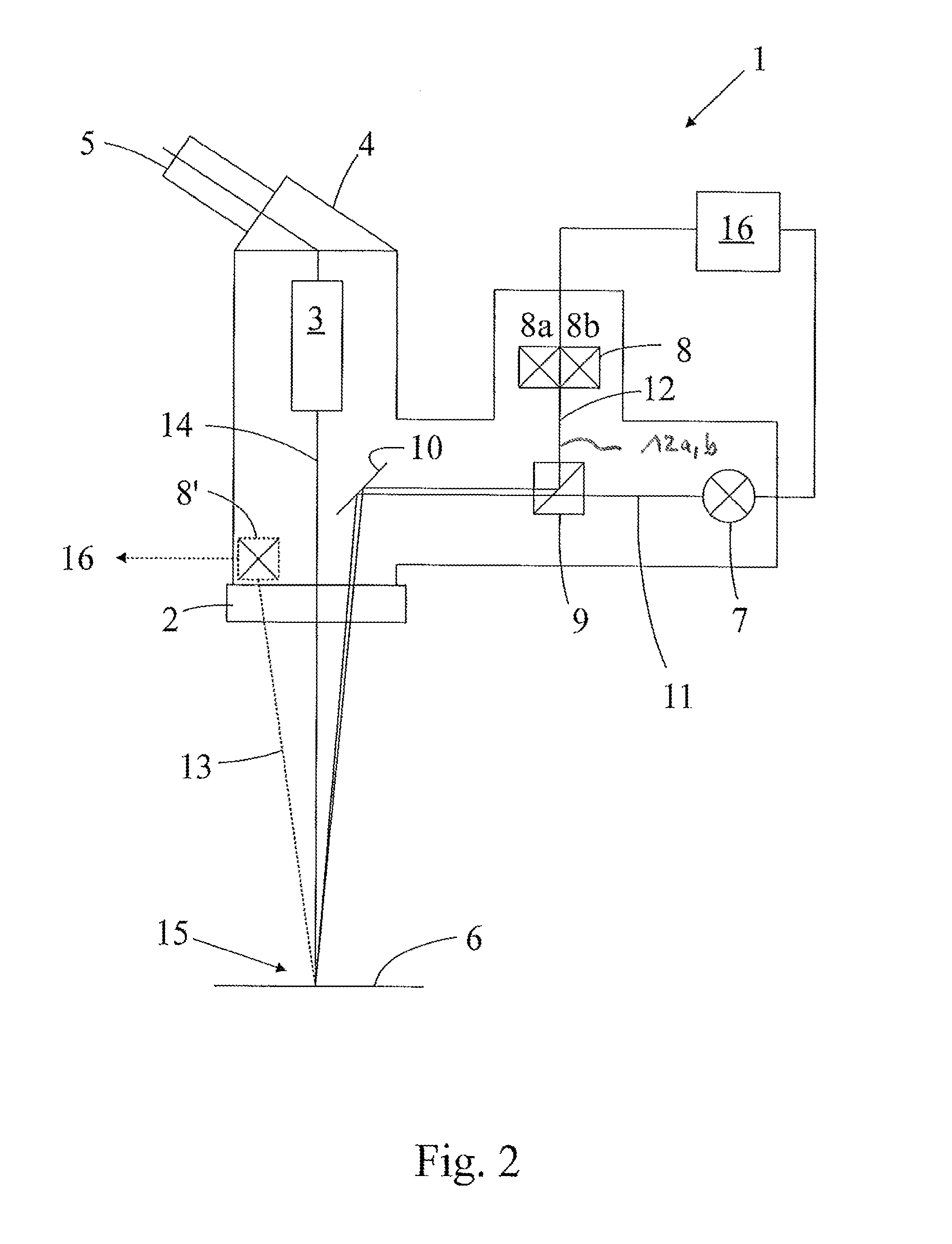Special-illumination surgical stereomicroscope
a stereomicroscope and surgical technology, applied in the field of special-illumination surgical stereomicroscopes, can solve the problems of affecting the efficiency of the white light from the surgical illumination device, affecting the patient's health, and having to undergo long approval procedures, so as to improve the efficiency of laser light, reduce the space requirements of lasers, and save spa
- Summary
- Abstract
- Description
- Claims
- Application Information
AI Technical Summary
Benefits of technology
Problems solved by technology
Method used
Image
Examples
Embodiment Construction
[0067]FIG. 1 shows an energy-level diagram illustrating the differences between stimulated emission, radiationless transition, and spontaneous emission (fluorescence). Radiation from an excitation light source causes an electron to go from ground state G to an excited state A. From there, the electron goes to an intermediate state Z1. In the case of non-fluorescent substances, this is followed by a radiationless transition to a lower energy state Z2, from where ground state G is reached again by vibrational relaxation.
[0068]Spontaneous emission (autofluorescence), which is also shown in FIG. 1, occurs only in fluorescent substances and without the need for separate excitation. However, since endogenous substances do not exhibit fluorescence, except for the rather low autofluorescence, and therefore foreign fluorescent substances are used, the present invention, in contrast, uses the principle of stimulated emission, which in many interesting endogenous substances in the body (e.g., ...
PUM
 Login to View More
Login to View More Abstract
Description
Claims
Application Information
 Login to View More
Login to View More - R&D
- Intellectual Property
- Life Sciences
- Materials
- Tech Scout
- Unparalleled Data Quality
- Higher Quality Content
- 60% Fewer Hallucinations
Browse by: Latest US Patents, China's latest patents, Technical Efficacy Thesaurus, Application Domain, Technology Topic, Popular Technical Reports.
© 2025 PatSnap. All rights reserved.Legal|Privacy policy|Modern Slavery Act Transparency Statement|Sitemap|About US| Contact US: help@patsnap.com



